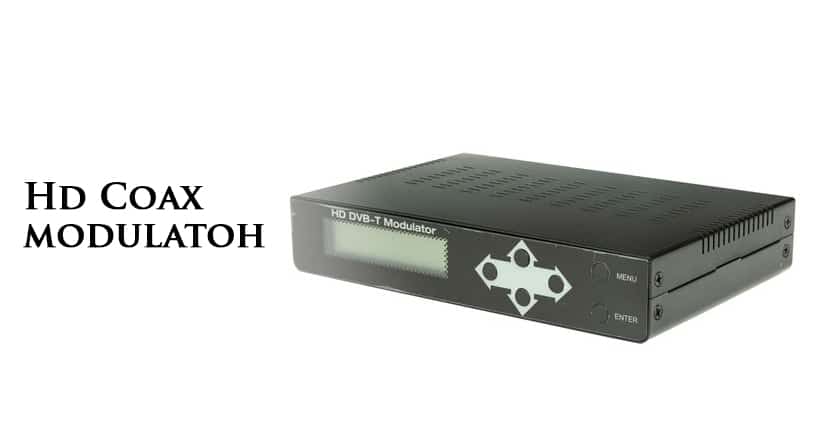What is HD Coax Modulatoh?
An HD coax modulator, or an HD RF modulator, is a device used to convert high-definition (HD) video signals into a digital RF (Radio Frequency) signal that can be distributed over coaxial cables. It is commonly used in applications where HD video signals are needed to be distributed to multiple televisions or display devices over an existing coaxial cable infrastructure.
The HD coax modulator takes the HD video input from a source such as a Blu-ray player, satellite receiver, or digital signage player. It converts it into a standard digital RF signal that can be received by televisions or other devices connected to the coaxial cable network. This allows you to distribute the HD video signal to multiple TVs without needing individual HDMI cables.
The modulator typically has inputs for HDMI or component video and audio and outputs a standard digital RF signal that can be connected to the existing coaxial cable network. Some models also offer additional features such as channel selection, encoding options, and built-in amplifiers for signal distribution.
HD coax modulators are commonly used in applications such as hotels, sports bars, educational institutions, and healthcare facilities, where HD video content is required to be distributed to multiple displays over an existing coaxial cable infrastructure.

What Is Needed to Install an HD Coax Modulatoh?
Installing an HD coax modulator can seem intimidating if you’re new to the process, but it can be relatively straightforward with the right steps. Here’s a beginner’s guide to installing an HD coax modulator:
- Understand the equipment: Familiarize yourself with the components involved in the installation. You will need the HD coax modulator, an HD video source (such as a Blu-ray player or satellite receiver), coaxial cables, and the television or display devices you want to connect.
- Determine the setup: Decide on the configuration that suits your needs. Consider the number of televisions or display devices you want to connect and the location of the modulator relative to the video source. Plan the routing of the coaxial cables accordingly.
- Connect the HD video source: Connect the HD video source (e.g., Blu-ray player) to the HD coax modulator. Use an HDMI cable or component video cables to connect the video output of the source device to the corresponding input on the modulator. Connect the audio output of the source device to the audio input on the modulator as well.
- Connect the modulator to the coaxial cable network: Use a coaxial cable to connect the RF output to the coaxial cable network. Identify an available coaxial cable outlet or splitter in the desired location where the modulator will be installed. Connect one end of the coaxial cable to the modulator’s RF output and the other to the coaxial outlet or splitter.
- Configure the modulator: Follow the manufacturer’s instructions to configure the modulator settings. This may involve selecting the desired RF channel for transmission, adjusting the encoding settings, and configuring any additional features the modulator provides. Refer to the user manual or setup guide for specific instructions for your model.
- Connect the television or display devices: Use coaxial cables to connect the televisions or communicate devices to the coaxial cable network. Locate the coaxial cable outlet nearest each display and connect it to the input or antenna port on the TV. If you have multiple displays, you may need a coaxial cable splitter to distribute the signal to each TV.
- Test the setup: Turn on the HD video source, modulator, and connected televisions or display devices. Tune each TV to the RF channel selected on the modulator. Ensure you can see the HD video signal on all the connected displays. If there are any issues, double-check the connections and modulator settings.
Conclusion
Remember, the steps may vary depending on the manufacturer and model of the HD coax modulator you’re using. Always refer to the manufacturer’s user manual and setup guide for detailed instructions specific to your device.

Wow Thanks for this page i find it hard to stumble on decent related information out there when it comes to this content thank for the site website